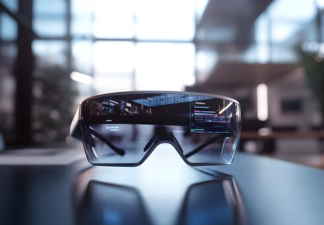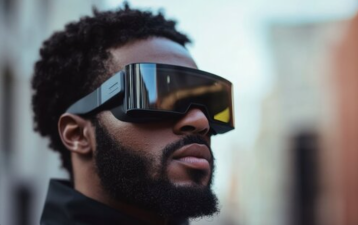Can you imagine that one day, we no longer have to look down at our phones, but can look up and see a huge virtual screen in front of us? With the continuous advancement of technology, the floor tiles under our feet may be made into touch screens. Today, this "future science fiction" technology has been quietly brought into our lives by an emerging device - smart AR glasses. According to data, the annual compound growth rate of the global AR glasses market is as high as more than 38%, and technology giants have also bet on this field. There is a question that has caused heated discussion.
Can you imagine that one day, we no longer have to look down at our phones, but can look up and see a huge virtual screen in front of us? With the continuous advancement of technology, the floor tiles under our feet may be made into touch screens. Today, this "future science fiction" technology has been quietly brought into our lives by an emerging device - smart AR glasses. According to data, the annual compound growth rate of the global AR glasses market is as high as more than 38%, and technology giants have also bet on this field. There is a question that has caused heated discussion. Will AR glasses completely replace mobile phones in the future? When mobile phones become "accessories" of the human body, the "entry" of AR glasses seems to have created a new battlefield in the technology circle. Some people believe that the increasing size of mobile phone screens has already exposed the problem - our hands have long been overwhelmed, and AR glasses can just free our hands. There are also doubts that AR glasses are currently too expensive, and there are many practical problems such as weight and battery life. It is too early to replace mobile phones. Surrounding these controversies, a newly launched domestic AR glasses Rokid AR Lite has attracted attention. Some people tried to use it to replace their mobile phones for a month and said that there may be hope in the future. Are these glasses really that magical? Or, has it really come to the time when we abandon our mobile phones?

If you haven't tried its functions completely, Rokid AR Lite is indeed difficult to impress skeptics. From the hardware point of view, its design completely subverts traditional cognition, weighing only 72 grams, which is almost equivalent to a pair of ordinary myopic glasses. It is light and easy to wear, without the oppression of "helmet-type equipment". However, behind the novelty, more people are obviously concerned about its practical use. Users who use it for the first time are amazed that it can actually allow you to have a 300-inch private screen at any time! When the IMAX movie is played in the sky, we who look down at the mobile phone screen have the illusion of being "abandoned" by the times? But some users have also raised questions about whether there are more practical scenarios besides watching movies? Office, business trip, games, can it cover all the needs of mobile phones?
From the perspective of consumers, these glasses do make daily life a little cooler. Users who have experienced it said that after connecting it to their mobile phones, watching videos is more shocking than walking into the cinema in person. As for office work, just connect the glasses to the mini host, and the glasses screen in front of you will instantly become a mobile "large-screen display". With an external keyboard, you can complete efficient document processing during business trips. Considering that many trains and airplanes currently have limited seat space, AR glasses are undoubtedly the most portable and efficient equipment at present. But having said that, the question also comes with it. Is such a device comprehensive enough to replace traditional mobile phones?

Facts have proved that AR glasses at this stage still cannot escape the trouble of some shortcomings. Take Rokid AR Lite as an example. Although its "hard power" seems to be good, it still has some shortcomings in compatibility with the software ecosystem of mobile phones. Some users have reported that the operation experience of some APPs on glasses is not smooth, and gestures and remote control operations will occasionally be misjudged. More importantly, it needs to complete most of its functions through the Station 2 remote control, which invisibly increases the cost of operation and learning. Back to real life, most people are accustomed to completing instant functions of communication, payment, and social interaction directly through mobile phones, and AR glasses are currently not fully capable of meeting these needs.
The deeper problem lies in the integration rate of industrial development. Unlike mobile phones, AR glasses are not a single piece of hardware. Their uses cover multiple fields such as the Internet ecosystem, telecommunications operations, and media resources. This also means that AR glasses require the collaboration of various industry chains, rather than relying solely on hardware companies to tackle tough problems. Once the "mobile phone addiction" is guided away, it may become an important productivity tool in the future. But before this goal is achieved, no device can become a "replacer" alone.
Can AR glasses become the next technological explosion? From the current development, it has indeed opened a door to the future. Hardware upgrades and simple function iterations alone may not be enough. If AR glasses cannot be integrated into every use scenario of the day like mobile phones, the goal of "replacing mobile phones" is still out of reach. On this road full of expectations and variables, Rokid AR Lite may be a good starting point, but it may still be a long way to go before we can get rid of the "head-down era" of mobile phones.

